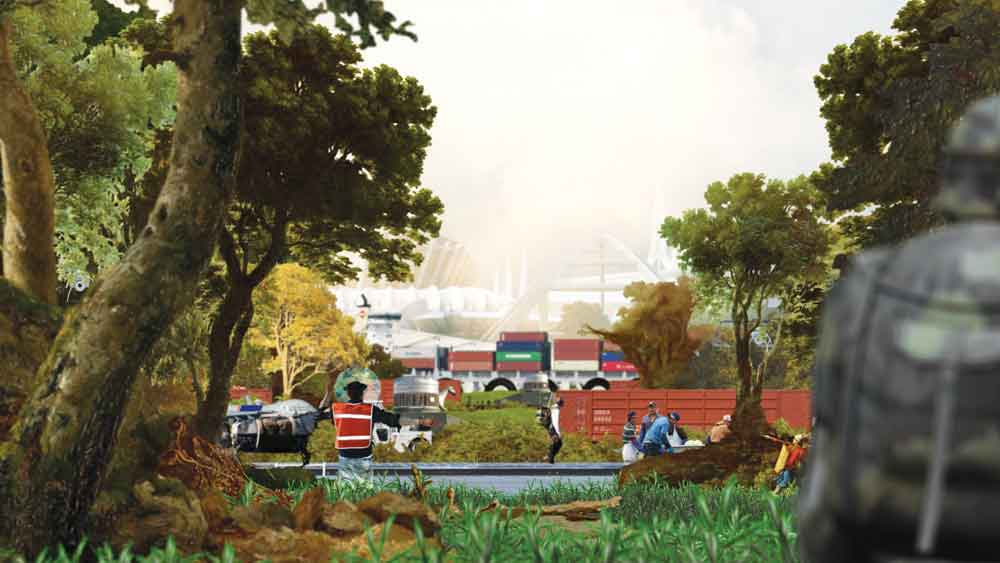« Uncategorized
Cliff Evans: Drones in the Garden
Curator’s Office - Washington, DC
By J.W. Mahoney
Collage’s difficulty as medium is that the images being brought together already have meanings in the contexts from which they’re taken, and those contexts remain as ghosts standing behind whatever new order of meaning their new situation is presenting. So that the new order multiplies and transforms-and could inflate, obscure, or distort-contexts and meanings.
Cliff Evans’ work has always demonstrated that, as a visual choreographer, his appropriated images work in service toward a wildly integrated sociopolitical drama-and he’s not bringing us good news… And he’s using collage as a cinematic medium-so we’re watching movies…
In Flag, an American flag is made up not of Jasper Johns’ paint strokes, but of images of red, white and blue unmanned military drones, that, as in a 21st century airshow, fly apart and come together… But these machines are autonomous killers, not controlled by soldiers but regularly by men in chairs wearing ties. So a common national symbol is being decorously, dynamically composed with active, deadly weapons.
Drone’s Garden is a harbor scene, whose cleanliness, sleekness, and speed-as the images scroll forth horizontally-offers a seamless, unbroken flow of containers, transportation modes and 21st century weapons, including several different types of military drones. And we see a family picnicking pleasantly in the presence of this massive efficiency, as we mostly actually do, in our present culture, being not “read in” to any awareness of these steadily engaged processes.
Evans’ Untitled (sketch for a monument to J.G. Ballard) is a series of successive images of highway structures, occasionally interrupted by American flags on flagpoles and moving vehicles. Ballard was a British “science fiction” writer whose work transcended that label fully, creating darkly futuristic novels that predicted an unstoppable and dehumanized capitalism. Evans’ images suggest Ballard’s projection of a basic, unfolding socio-political inertia… that leads only to more of the same imagery…
So do we, as Evans suggests, live in a world whose present dynamic consists of violence and money? What’s obvious is that Evans’ work offers the presences of objects and sometimes people who live with, through, and beneath an implacable fabric of socio-politico-economic power. His selection and orchestration of images doesn’t offer any validation of this condition, but he’s committed to offering a mirror to it.
(November 10 - December 20, 2012)
J.W. Mahoney is an artist, independent curator, and writer. He is a regular contributor to Art in America, ArtNews and Art Papers.



































